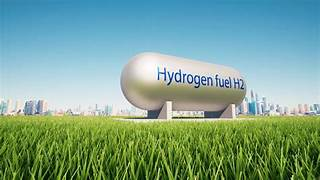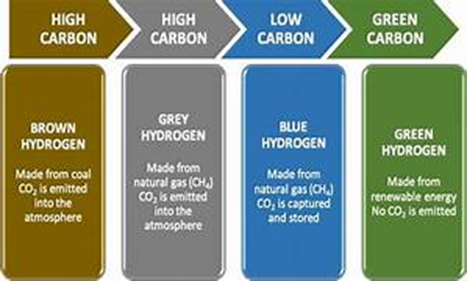Description

Disclaimer: Copyright infringement not intended
Context
- India announces definition of Green Hydrogen.
Details
- The Green Hydrogen Standard for India sets a criterion of 2 kg CO2 equivalent per kg H2 as a 12-month average emission threshold.
- It is a significant move for the progress of the National Green Hydrogen Mission.
- The guidelines established by the Ministry of New and Renewable Energy (MNRE), Government of India, delineate the emission benchmarks that must be fulfilled for hydrogen production to qualify as 'Green', signifying its origin from renewable sources.
- The Ministry of New & Renewable Energy has characterized Green Hydrogen as having a well-to-gate emission (encompassing processes like water treatment, electrolysis, gas purification, hydrogen drying, and compression) that does not exceed 2 kg CO2 equivalent per kg H2.
- The scope of the definition encompasses both electrolysis-based and biomass-based hydrogen production methods.
- The notification explicitly states that the Ministry of New & Renewable Energy will define a comprehensive methodology for measuring, reporting, monitoring, on-site verification, and certifying green hydrogen and its derivatives.
- Bureau of Energy Efficiency (BEE), Ministry of Power shall be the Nodal Authority for accreditation of agencies for the monitoring, verification and certification for Green Hydrogen production projects.
Green Hydrogen
- It is a colourless, odourless, tasteless, non-toxic and highly combustible gaseous substance.
- Green hydrogen stands as an energy resource that emerges via water electrolysis using renewable sources like wind, solar, and hydroelectric power.
- This form of hydrogen plays a key factor in transitioning towards a carbon-neutral economy while aiding in climate change mitigation.
- The produced hydrogen can be stored and employed as fuel across transportation, industry, and agricultural sectors.
- Other types of Hydrogen: Hydrogen can also be categorized as 'grey' and 'blue'.
- Grey hydrogen is manufactured from fossil fuels like coal and gas, constituting around 95% of total production in South Asia.
- Blue hydrogen is generated utilizing electricity produced by combusting fossil fuels; however, it incorporates technologies to capture and prevent the carbon emissions from being released into the atmosphere.

Reasons to Develop Green Hydrogen
- Energy Transition: As societies shift away from fossil fuels, green hydrogen offers a versatile and clean energy carrier to replace traditional energy sources in various sectors, such as transportation and industry.
- Energy Storage: Hydrogen can store excess renewable energy that might otherwise go to waste, serving as a reservoir for intermittent renewable sources like solar and wind power.
- Decarbonizing Industries: Hard-to-abate sectors like heavy industry and chemicals rely heavily on fossil fuels. Green hydrogen can be utilized as a clean feedstock and energy source, aiding in decarbonization efforts.
- Energy Security: Diversification of energy sources through green hydrogen production reduces dependence on finite fossil fuels, enhancing energy security and resilience.
- Global Market Potential: The growing global interest in sustainable energy solutions presents a substantial market for green hydrogen technologies and expertise.
- Technological Innovation: Research and development in green hydrogen technologies spur innovation, leading to more efficient production methods and lowering costs over time.
- International Commitments: Many countries are committed to achieving net-zero emissions. Green hydrogen can aid in meeting these targets by offering a clean energy alternative.
Applications of Green Hydrogen
- Energy Storage: Hydrogen can store excess energy generated from renewable sources when demand is low and release it when demand is high. This addresses the intermittency of renewable energy generation and contributes to grid stability.
- Power Generation: Green hydrogen can be used in gas turbines or fuel cells to generate electricity. This can provide backup power during peak demand or when renewable energy sources are unavailable.
- Residential and Commercial Heating: Hydrogen can be used for space heating and water heating in homes and businesses, reducing the reliance on fossil fuels and lowering carbon emissions.
- Decentralized Power Generation: Remote areas with limited access to electricity grids can use green hydrogen to generate power locally using fuel cells or hydrogen combustion.
- Aviation and Shipping: Green hydrogen can be used to produce synthetic aviation and marine fuels, helping to decarbonize these hard-to-abate sectors.
- Hydrogen Injection: Green hydrogen can be blended with natural gas in existing pipelines, reducing the carbon intensity of the gas supply.
- Hydrogen Fuelling Stations: Infrastructure for refuelling hydrogen-powered vehicles is being developed, enabling the expansion of FCVs in regions with a focus on clean transportation.
- Carbon Capture and Storage (CCS): Green hydrogen can be used in conjunction with CCS technologies to create "blue" hydrogen, where the carbon emissions from hydrogen production are captured and stored underground.
- Agriculture: Green hydrogen can be utilized for sustainable agricultural practices, including producing fertilizers and running agricultural machinery.

Conclusion
The development of green hydrogen aligns with multiple environmental, economic, and societal goals, making it a compelling avenue for sustainable energy progress.
|
PRACTICE QUESTION
Q. Green hydrogen has gained remarkable attention as a game-changing solution for addressing both energy challenges and climate change. Explain? (250 Words)
|
https://pib.gov.in/PressReleaseIframePage.aspx?PRID=1950421













